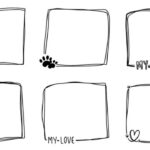I. Understanding Upcycled Materials: Definition and Concept
II. Benefits of Using Upcycled Materials in Sustainable Practices
III. Creative Applications of Upcycled Materials in Everyday Products
Understanding Upcycled Materials: Definition and Concept
Hey there! Have you ever heard the term upcycled materials? If not, don’t worry! Let’s dive into what it means and the amazing concept behind it. Upcycling is a creative process where we take materials that are no longer useful in their original form and give them a new lease on life. It’s like a makeover for old stuff, transforming it into something valuable and functional.
So, what exactly are upcycled materials?
Upcycled materials can be anything from discarded items to waste products. Unlike recycling, which usually breaks down materials to create new products, upcycling keeps the original materials intact and enhances their value or purpose. Think of it as a sustainable art project! Here are a few examples of common upcycled materials:
- Old furniture: With a bit of creativity, a worn-out chair can become a stylish plant stand.
- Glass jars: Those empty jars from your favorite jam can be transformed into chic storage solutions.
- Textiles: Old clothes can be turned into tote bags or quilts, giving them a new purpose.
- Wood pallets: These sturdy structures can be repurposed into trendy coffee tables or garden planters.
The Concept of Upcycling
At its core, upcycling is all about sustainability and creativity. It encourages us to think outside the box and see potential where others might see garbage. The beauty of upcycling lies in its focus on resourcefulness. Instead of tossing items into a landfill, we’re challenged to reimagine their use. This not only helps reduce waste but also minimizes the need for new materials, making it a win-win for the environment!
Imagine walking into a room filled with beautifully crafted items, each telling a story of transformation. That’s the magic of upcycling! It’s a way to honor the materials we have and appreciate their journey. Plus, it often results in one-of-a-kind pieces that bring personality and charm into our lives.
Why Understanding Upcycled Materials Matters
Understanding the concept of upcycling is essential in today’s world where sustainability is becoming increasingly important. By embracing upcycled materials, we take a proactive step toward reducing waste and promoting a circular economy. This means that instead of following the traditional linear model of “take, make, dispose,” we move towards a cycle where materials are continually reused and revitalized.
Furthermore, upcycling encourages innovation! It pushes us to think creatively about the resources we have at hand. When we start to see the potential in materials that would otherwise be discarded, we open ourselves up to a world of possibilities. So, the next time you come across something you think is broken or useless, ask yourself: How can I upcycle this?
In summary, upcycling is all about redefining value and encouraging a sustainable mindset. By understanding upcycled materials, we not only honor our environment but also unleash our creativity. So, let’s embrace the upcycling movement and see how we can contribute to a more sustainable future!
Benefits of Using Upcycled Materials in Sustainable Practices
Hey there! Are you curious about the buzz surrounding upcycled materials? Well, you’re in for a treat! Upcycling is a fantastic way to breathe new life into items that might otherwise end up in a landfill. It’s not just about saving the planet; it’s also about creativity, resourcefulness, and a whole lot of benefits. Let’s dive into why incorporating upcycled materials into sustainable practices is such a game-changer!
1. Reducing Waste
First off, one of the most significant benefits of using upcycled materials is the sheer impact it has on waste reduction. Every year, millions of tons of waste are generated, and much of it could be repurposed! By upcycling, we can:
- Keep items out of landfills, which helps reduce the overflow and the pollution associated with waste disposal.
- Extend the lifespan of materials that would otherwise be discarded, giving them a second chance at being useful.
Think of upcycling as a superhero move for your trash—transforming it from waste to treasure!
2. Conserving Resources
Another compelling reason to embrace upcycled materials is the conservation of natural resources. When we create new products from scratch, it often involves extracting raw materials, which can be energy-intensive and damaging to the environment. With upcycling, we:
- Minimize the need for new resources, significantly lowering the environmental footprint.
- Help preserve ecosystems and biodiversity by reducing the demand for resource extraction.
Every little bit counts, and choosing to upcycle is a step towards a more sustainable future!
3. Encouraging Creativity and Innovation
Let’s not forget about the fun side of upcycling! When you start using upcycled materials in your projects, you’re not just being eco-friendly; you’re also embracing creativity and innovation. Upcycling encourages:
- Out-of-the-box thinking—who knew an old ladder could become a trendy bookshelf?
- Unique designs that stand out—upcycled products often have a one-of-a-kind charm, making them conversation starters.
So, whether you’re crafting a gift or decorating your home, upcycling opens the door to endless possibilities!
4. Supporting Local Communities
Another fantastic benefit of upcycling is that it often supports local artisans and small businesses. Many makers focus on creating products from upcycled materials, which means:
- You’re helping to create jobs within your community.
- You’re promoting a circular economy that values sustainability, creativity, and craftsmanship.
By choosing upcycled products, you’re not just contributing to a greener planet; you’re also bolstering your local economy!
5. Raising Awareness
Lastly, when you incorporate upcycled materials into your life, you’re making a statement. You show others that sustainability matters! This can lead to:
- Inspiring friends and family to think twice about their waste.
- Encouraging a cultural shift towards valuing sustainability and creativity.
So, by simply choosing to upcycle, you’re creating a ripple effect of positive change.
In summary, the benefits of using upcycled materials in sustainable practices are vast and impactful. You’re not just making eco-friendly choices; you’re also embracing creativity, supporting local communities, and helping to raise awareness. So, what are you waiting for? Start exploring the world of upcycling, and let your creative juices flow while you do your part for the planet!
Creative Applications of Upcycled Materials in Everyday Products
When we think about upcycling, the first idea that often comes to mind is DIY projects, but the possibilities are truly endless! Upcycled materials can be used in a variety of everyday products, and they not only help reduce waste but also bring a unique flair to our lives. Let’s dive into some creative applications of upcycled materials that you can incorporate into your daily routine.
1. Fashion and Accessories
One of the most exciting areas for upcycled materials is fashion. Designers all over the world are creating stunning pieces from discarded fabrics, leather, and other materials. Here are a few examples:
- Denim Reimagined: Old jeans can be transformed into trendy bags, skirts, or even patchwork jackets. Not only do they look great, but they also tell a story!
- Jewelry from Scraps: Broken jewelry or leftover pieces can be redesigned into unique necklaces, bracelets, or earrings. This not only reduces waste but also allows for a completely personalized accessory.
- Fabric-Based Accessories: Old t-shirts can be braided or sewn into headbands, belts, or reusable shopping bags. It’s a fun and practical way to give your old clothes a new life!
2. Home Decor
Your living space can also benefit from the charm of upcycled materials. Here are some creative ways to refresh your home:
- Furniture Flip: Old furniture can be sanded down and painted, or upholstered with new fabric to give it a modern twist. This not only saves money but also adds a personal touch to your home.
- Glass Jar Magic: Use glass jars as candle holders, vases, or storage containers. A little paint or twine can turn them into beautiful decor pieces.
- Wooden Pallets: These versatile materials can be transformed into rustic coffee tables, garden planters, or even wall art. The possibilities are limited only by your imagination!
3. Kitchen Innovations
In the kitchen, upcycling can be both functional and stylish:
- Food Storage: Old mason jars can be repurposed for storing spices, grains, or leftovers. They’re not only practical but also look great on display!
- Cutting Boards from Scrap Wood: If you’ve got leftover wood from a project, consider making a custom cutting board. It’s a beautiful way to incorporate a personal touch to your kitchen essentials.
- Upcycled Utensils: Old silverware can be bent and shaped into unique hooks or even garden markers. Not only does this reduce waste, but it also adds character to your cooking space.
4. Gifts and Personal Care
Finally, let’s not forget about gifting and personal care products:
- Homemade Gift Wrap: Use newspapers, old maps, or fabric scraps to wrap your gifts. This adds a personal touch and is much more eco-friendly than traditional wrapping paper.
- Natural Beauty Products: Upcycling isn’t just for physical items. You can create homemade scrubs or masks using leftover citrus peels, coffee grounds, or other kitchen scraps.
- Scented Sachets: Old fabric can be sewn into small bags and filled with dried herbs or flowers for a lovely, natural fragrance in your drawers or closet.
Incorporating upcycled materials into your everyday life is not only creative but also a rewarding way to contribute to a more sustainable world. So why not roll up your sleeves and see what unique items you can create? Happy upcycling!










Comments